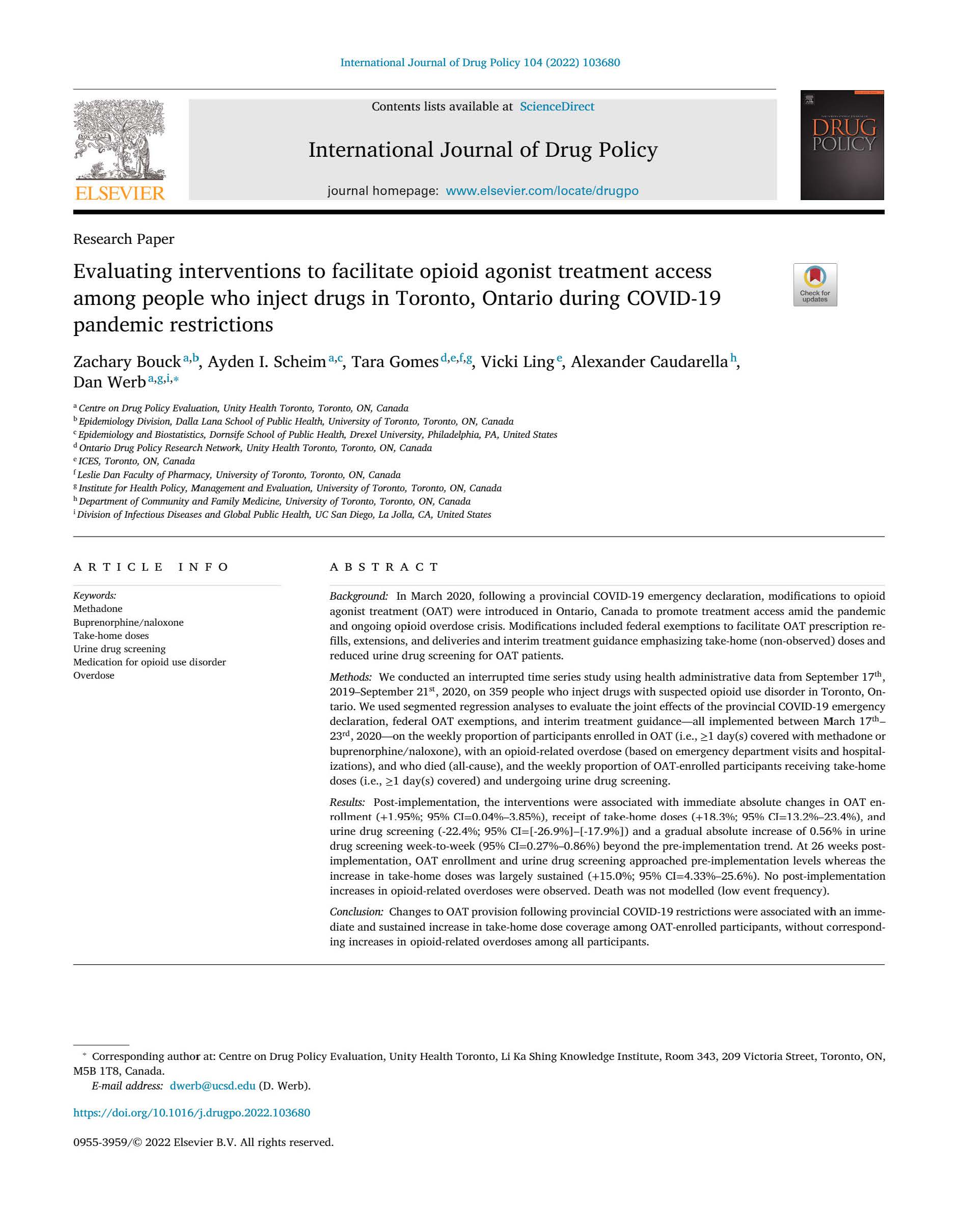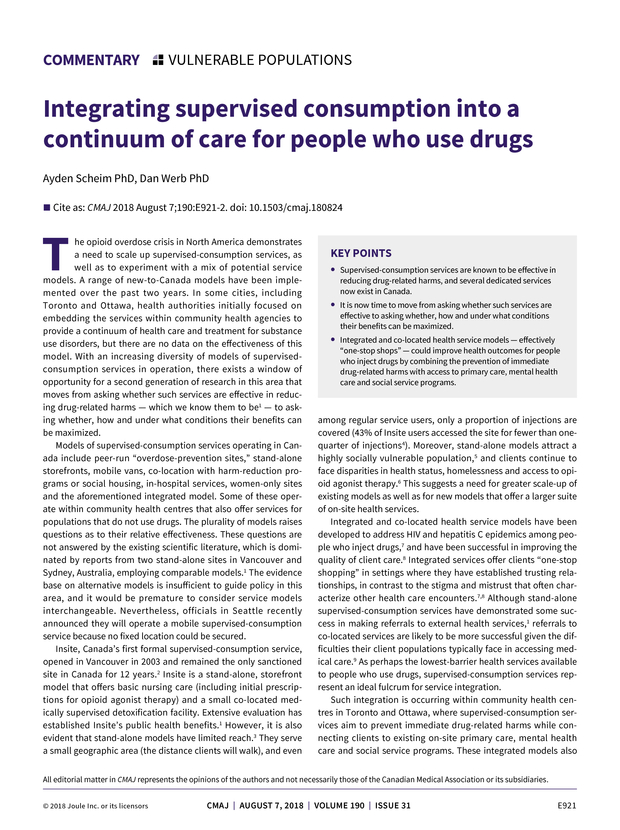Supervised Consumption Service Use and Recent Non-Fatal Overdose among People Who Inject Drugs in Toronto, Canada
Abstract
Background: Aiming to reducing overdose mortality, over 40 supervised drug consumption services (SCS) presently operate in Canada. Arguments against SCS include the potential for increased non-fatal overdoses mediated by risk compensation. This study estimates associations between SCS use and recent non-fatal overdose among people who inject drugs (PWID).
Methods: We analyzed cross-sectional baseline data collected between November 2018 and March 2020 from a cohort of adult PWID in Toronto, Canada. Recent non-fatal overdose was self-reported over the previous six
months. The primary exposure was frequency of SCS use, self-reported as the proportion of injections performed at an SCS (all or most [75–100%], some [26–74%], few [≤25%], or none) in the previous six months. The prevalence of recent overdose was compared between all unique pairs of groups based on their frequency of SCS use and expressed as covariate-adjusted prevalence ratios (PR) estimated using modified Poisson regression.
Results: Among 701 PWID (median [IQR] age, 40 [33 to 49]; 64.3% cisgender men; 56.8% injecting daily), most reported SCS use (all/most, 26.2%; some, 30.9%; few, 29.4%) versus no use (13.5%), with 38.6% reporting a recent overdose. From adjusted regression analyses, more frequent SCS use was not statistically significantly associated with overdose when compared to either no SCS use or less frequent use. Associations between SCS use frequency and overdose were notably smaller among SCS clients compared to associations between SCS clients and non-users (e.g., all/most versus none: PR, 1.43 [95% CI, 0.93 to 2.21]; all/most versus some: PR, 0.94 [95% CI, 0.75 to 1.17]; all/most versus few: PR, 1.15 [95% CI, 0.89 to 1.48]).
Conclusion: Findings did not indicate statistically significant associations between SCS use frequency and recent non-fatal overdose, particularly among SCS clients who may be more comparable. Nevertheless, overdose was common, underscoring the need to prevent non-fatal overdose and associated morbidity.
View full article here.







